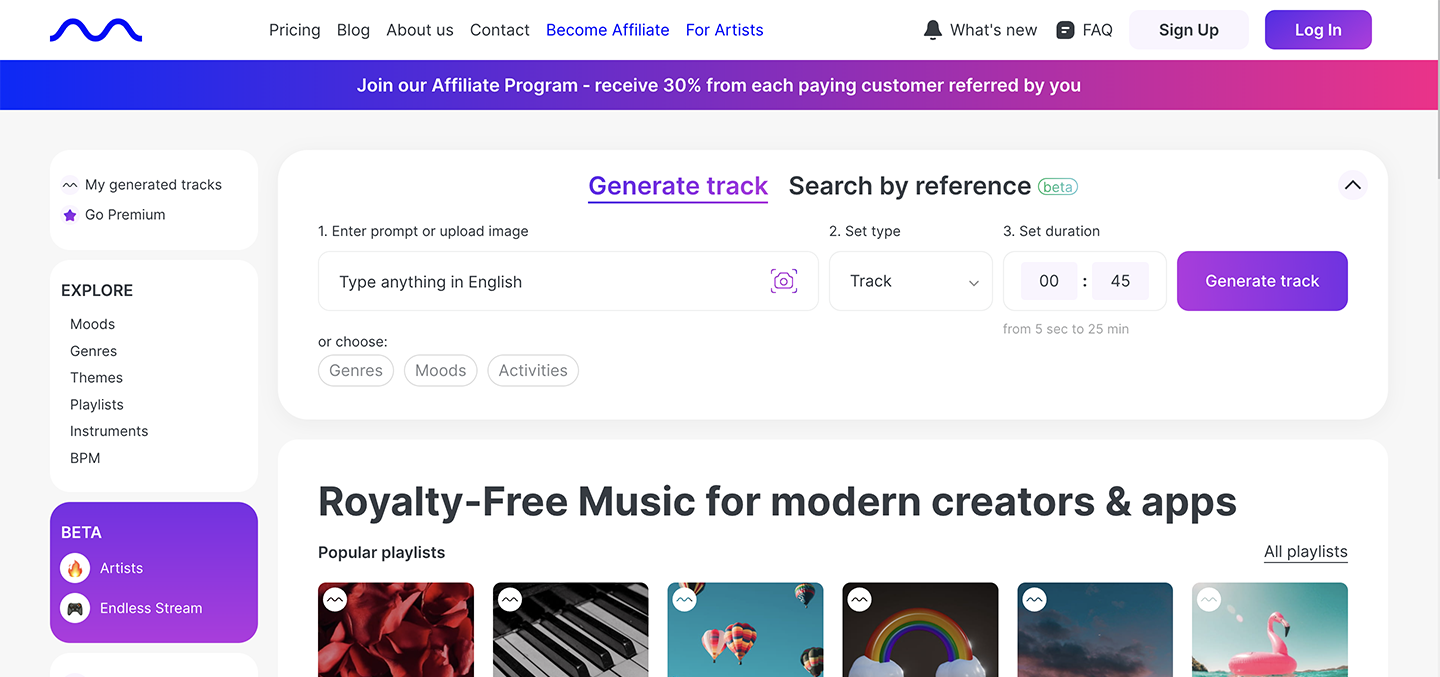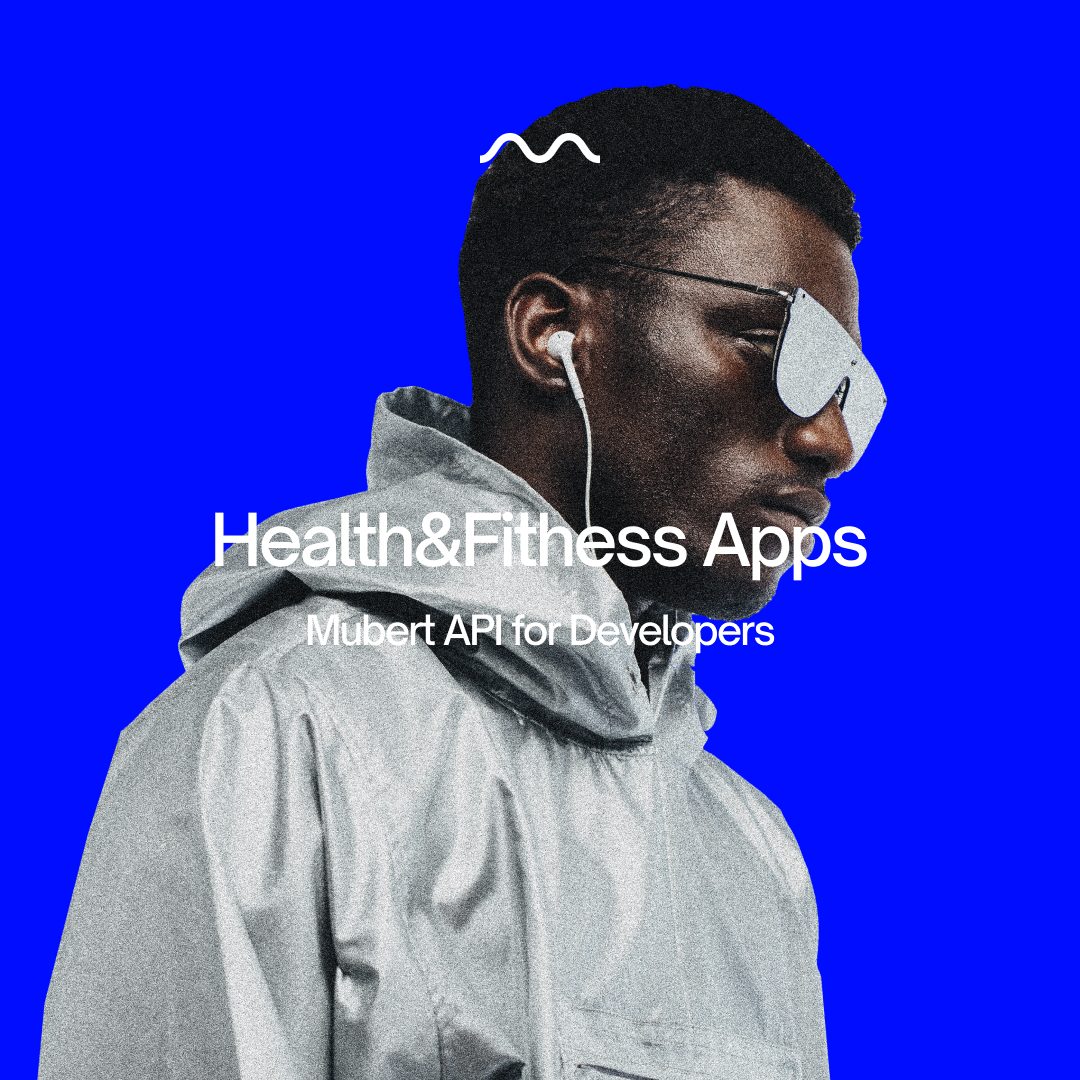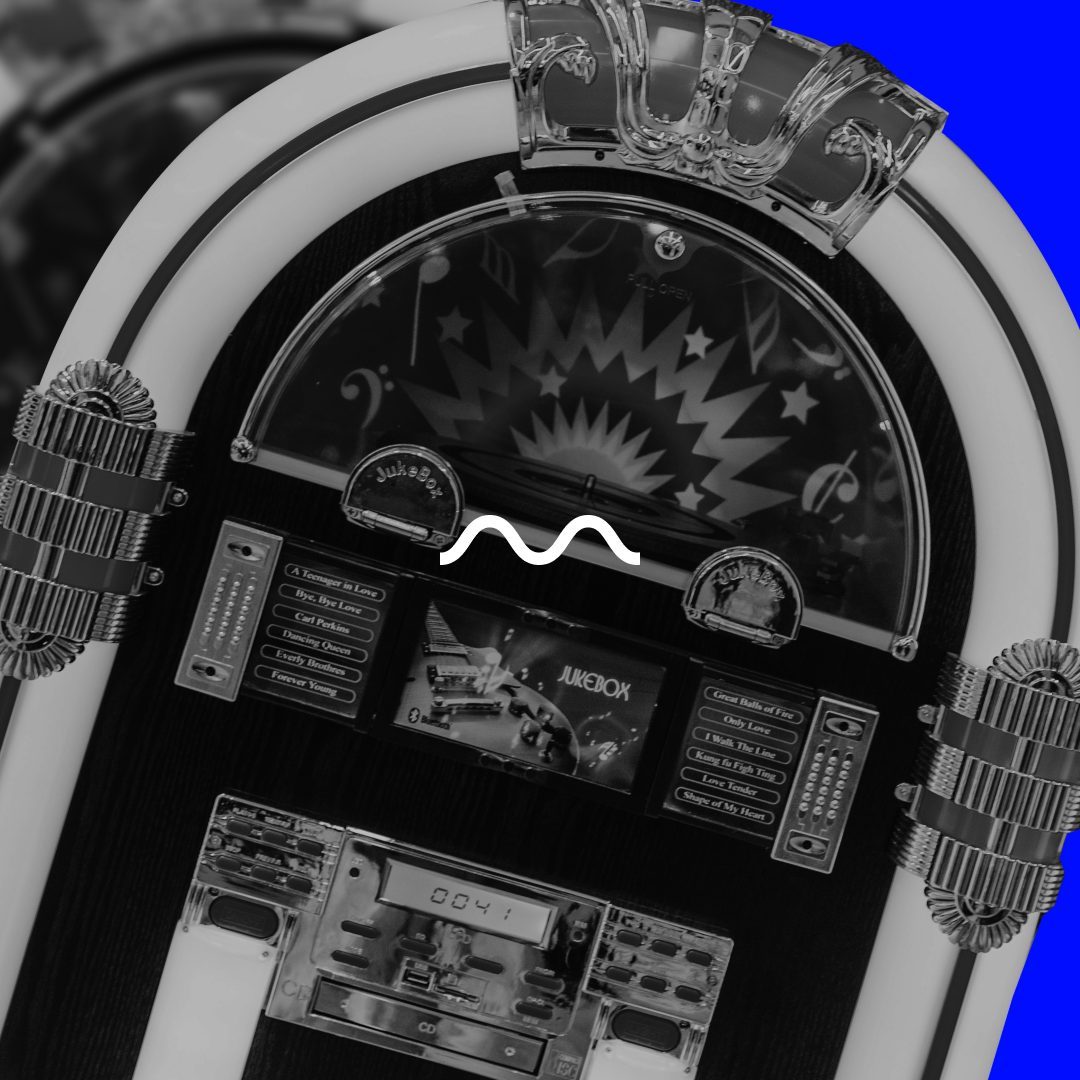
Create royalty-free AI music tracks with one click
Just describe what you want and get an instant track of any duration — and you will never meet any troubles with copyrights
Get startedTune up your fitness app with music to engage users and help them achieve their best results.
Thanks to modern technologies today, you don’t have to go to the gym to have a great training session, as there’s a fitness app for almost any activity ready to drill you anytime and anywhere.
Mubert was conceived as a music app for running. Now, when people daily cover thousands of miles and lift tons of weight while listening to our streams – we are doubtless that well-selected music fuels fitness apps’ effectiveness and popularity.
If you want to make a difference with your app for running, working out, or doing yoga, it’s good to know about the application of music in sports.
Music and the Exercise Revolution
With the debut of the Sony Walkman player in the 70-s, adding some joy of music to a routine of training sprinted to everyone’s minds. By 90-s, Jane Fonda had engaged millions of people into exercising with her cool disco shaping courses on VHS.
Now, when Apple is producing the seventh generation of iPods and people got access to millions of tracks ready to be streamed to any of their devices — technology has brought us closer to music than ever before.
What Is Music in a Physical Activity Context?
Consider music as a legal drug that boosts levels of endurance, power, productivity, and strength that exceed expectations.
Scientists distinguish three main types of musical effects in exercising and sport:
Psychological — music can regulate mood, emotions, cognition, and feelings of pleasure. “It is possible to make your training session feel far more pleasurable with careful attention to music selection, even at relatively high workloads.” Given how much sports depends on psychological readiness, music can make a telling difference.
Psychophysical — music can be a potent stimulator for our senses.
Ergogenic — music can enhance physical performance by delaying fatigue and increasing workout capacity.
According to the available evidence, the music captures attention, raises spirits, triggers a range of emotions, alters or regulates mood, evokes memories, increases work output, heightens arousal, induces states of higher functioning, reduces inhibitions and encourages rhythmic movement — all purposes that have considerable application in the exercise domain.
It’s All About Rhythm
Besides musicality, cultural impact, and extra-musical association (the Rocky effect), rhythm response, especially to the tempo (speed of music as measured in beats per min [bpm]), is the most crucial factor contributing to the motivational qualities of music.
To make sense of the large mass of different facts, we’ve placed them in the congruence of music application in three main stages of training: pre-task, in-task, and post-task.
As most people download fitness apps for certain types of activities, we’ll concentrate on in-task music use.
Synchronizing Training with Music
Dozens of studies on the application of music during exercising proved that it helps to endure longer, work out harder, and feel better.
A strong tendency of our bodies to respond to the rhythmic qualities of music is used by many athletes to synchronize their movements. Music with a steady electronic or ambient beat works best when exercise requires doing some simple repetitive actions, like jogging, cycling, or calisthenics workouts.
A great example of how synchronizing with music can enhance physical performance was demonstrated by a legendary distance runner Haile Gebrselassie on Birmingham’s National Indoor Arena (UK) in 1998. He asked organizers of the track and field meet to play his favorite song – “Scatman” by Scatman John – during the race. And when the stadium speakers broke out with ‘Ski-bi dibby dib yo da dub dub’ – Haile took off like a shot from a gun, breaking the world indoor record in 2000 meters (4 minutes 52.86 seconds).
Commenting on the race, he said, “The music gives me a rhythm that fits in with my record pace”.
And that was just one of many cases when music gave athletes an edge.
Many kinds of researches have suggested that synchronizing with music also helps athletes move more efficiently by saving energy and improving coordination. Particularly one study, which examined the performance of stationary cycles, showed that participants were able to maintain a set intensity using 7.4 percent less oxygen when listening to synchronous music. In a similar experiment, subjects indicated a 14 percent increase in endurance over no-music control. Recent research by famous sports psychologist Peter Terry gives even more convincing evidence of the doping effects of music. He found that elite triathletes were able to run 19.7 percent longer in synchrony with the music, regardless of how motivational it was. No wonder that music is banned in many sports competitions.
Asynchronous Use of Music in Sports
Moreover, music helps to exercise with higher efficiency even when you don’t sync your movements to a musical beat.
In 1995 Japanese researcher Mako Iwanaga proposed that as heart rate increases, people prefer faster and faster music. But there’s a nuance. More recent studies have shown that music tempo that exceeds 140 bpm doesn’t elicit higher music tempo preference at high exercise intensities. Participants reported choices for a much narrower band of cadences (from 120 to 140 bpm) than was expected (90 to 155 bpm). Which makes sense — no one likes to speed up pushing a 200-pound barbell. That’s why it’s better to use music asynchronously at low-to-moderate-intensity endurance tasks.
Music plays a unique role in Yoga and Pilates. Especially for such kinds of activities, we create vibrant low-tempo music streams.
If you want to make your fitness app useful — orchestrate users’ training sessions with music.
Contact us to describe your product, and we’ll suggest a music solution that will perfectly fit your user’s experiences. Smart music streams in 30+ moods and genres from Calm to House to Techno and many more created by AI are royalty-free and can be streamed to any device worldwide via API.
Finish Lines
The most fantastic insight, which we kept for this moment, is that people don’t have to be professional athletes to get the most from exercising with music. On the contrary, according to the studies, music has a more potent effect on stamina and overall feeling in untrained or just recreationally active.
Music is a powerful tool to engage first-time users— remember it building your fitness app.
API, B2B, Health&FitnessAI Music Company
Mubert is a platform powered by music producers that helps creators and brands generate unlimited royalty-free music with the help of AI. Our mission is to empower and protect the creators. Our purpose is to democratize the Creator Economy.
Generate Track API for Developers
















